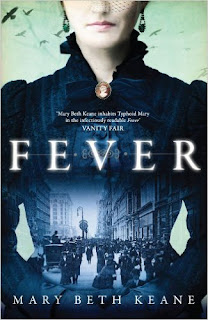
She was an unlucky woman, and she raged against her bad luck, at first because she didn’t understand it.

She was given every chance to live in society, if she didn’t cook. Mary’s quarantine was justified and not uncomfortable. Why then tell Mary’s story, and not his? It’s hard to make a case for any great injustice here. Soper “looked so pleased to see her that Mary wondered for a second if he could be there on other business.” Thanks to his efforts, she was returned to North Brother Island, and there she spent the last 23 years of her life.Ī fascinating episode in modern medical history, in which the true hero is surely the indefatigable Soper.

There she stayed for three years until a softhearted health commissioner allowed her to return to the city, as long as she never cooked for anyone again and regularly washed her hands.īut as always, when Mary’s in the kitchen, people get sick. She was quarantined on North Brother Island in the East River in 1907. A woman of robust temper, she cursed her accusers, attacked them physically and fled them when she could to no avail. She was soon identified as the first known asymptomatic, or healthy carrier of the disease. A man named George Soper, a sort of medical detective, tracked the source of the infection to Mary. Various people for whom she cooked suffered bouts of typhoid fever. Between 18 she worked as a cook in the homes of a number of wealthy families, and later in a hospital.

But this time the immigrant’s ordeal is harsher, and her fate more complicated than that of the characters in the slow, graceful pages of “The Walking People.” Here the action has shifted from the recent past to the early 1900s, and the immigrant in question is Mary Mallon of County Tyrone - better known to us as Typhoid Mary. In “Fever,” the Irish immigrant in New York is again the focus of the story, and as before the twin themes of social exclusion and exile are explored.

At the same time it’s a long, fond portrait of a family. That novel is less about the anomalous position these itinerant peddlers occupy in Irish society than it is about the consequences of concealing from a child the circumstances of her birth. Mary Beth Keane’s first novel, “The Walking People,” could stand as a historical sequel to her new novel, “Fever.” The earlier book is the story of two Irish sisters who immigrate to New York in the early 1960s, accompanied by a young man who belongs to the “walking people,” also known as the “traveling people” or tinkers.


 0 kommentar(er)
0 kommentar(er)
